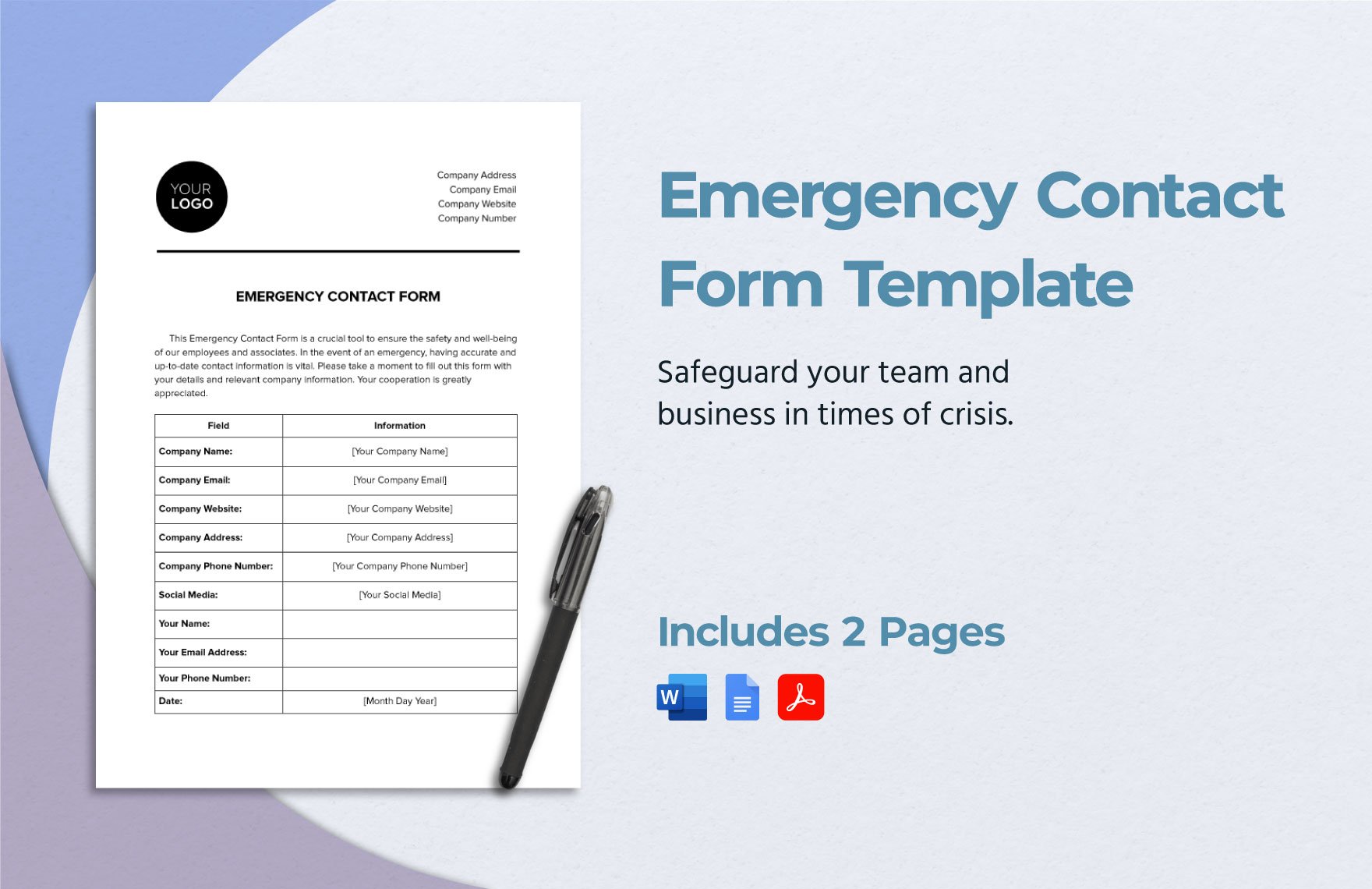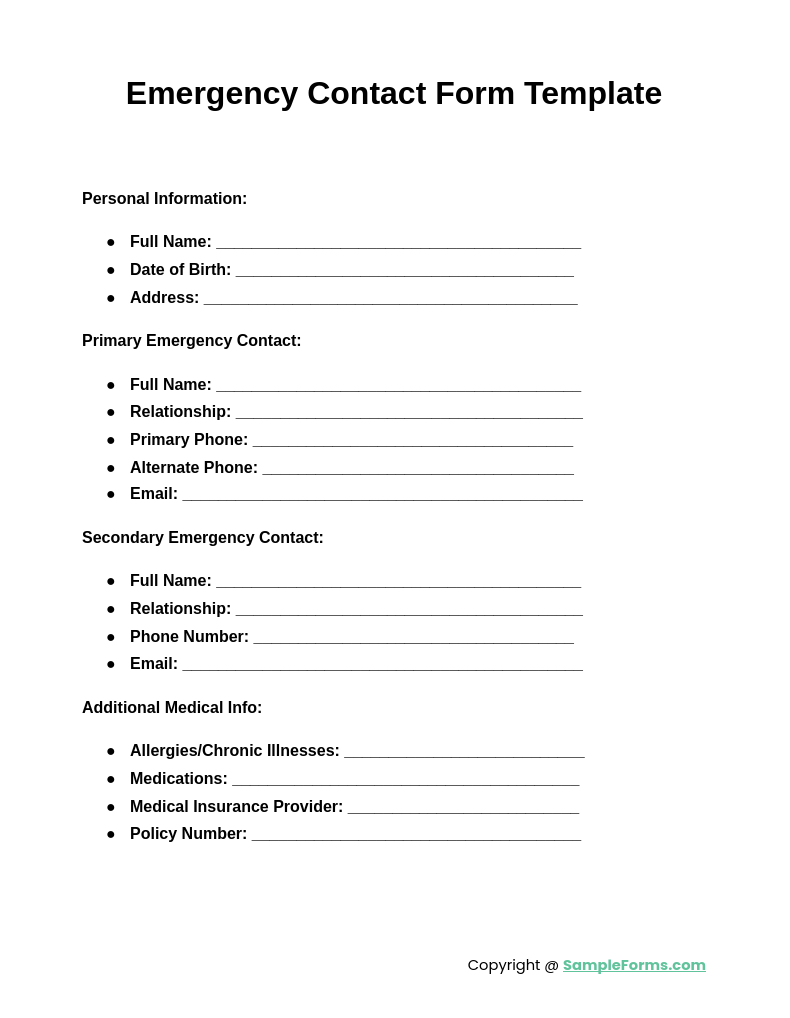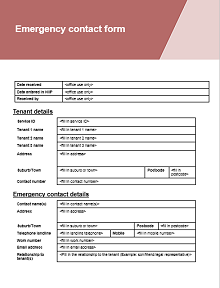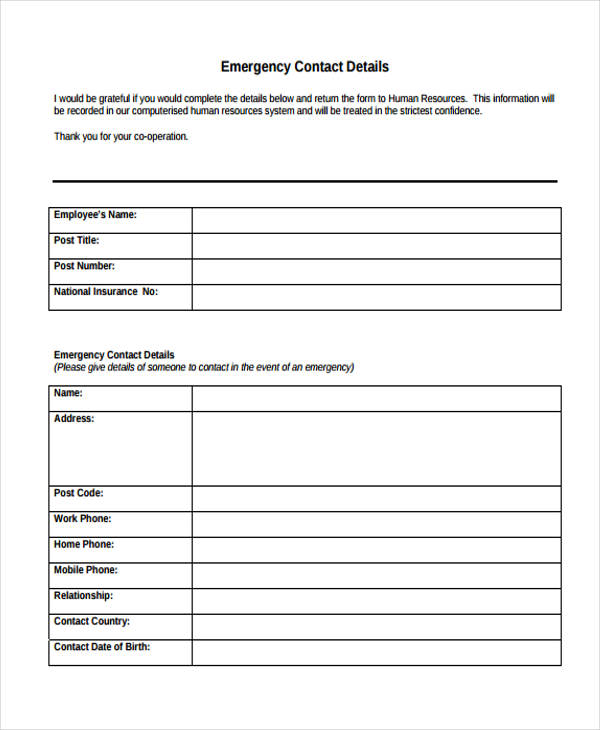The Emergency Contact Information Template You Need Right Now
Life throws curveballs. Unexpected accidents, medical emergencies, and unforeseen events can happen at any time. In the chaos of such situations, having readily accessible emergency contact information is crucial. It allows first responders, medical professionals, and even well-meaning bystanders to quickly notify your loved ones and provide the necessary support. This article provides a comprehensive emergency contact information template, ensuring you’re prepared for the unexpected.
Why You Absolutely Need an Emergency Contact Information Template
Imagine being incapacitated and unable to communicate. Without easily accessible emergency contact details, valuable time could be lost, potentially impacting your care and the ability of your family to be informed. A well-structured emergency contact template bridges this gap, offering peace of mind and critical information when it matters most.
Building Your Comprehensive Emergency Contact Information Template
This template can be adapted to your specific needs, but it provides a solid foundation. Consider printing a physical copy and also storing a digital version on your phone and other easily accessible devices.
I. Personal Information:
- Full Name: (Your legal name)
- Date of Birth: (MM/DD/YYYY)
- Address: (Your current address)
- Phone Number(s): (Home, Mobile, Work - if applicable)
- Email Address: (A reliable email address)
- Medical Insurance Information: (Provider Name, Policy Number, Group Number)
- Blood Type: (If known)
- Known Allergies: (Medications, foods, environmental)
- Medical Conditions: (Diabetes, Asthma, Epilepsy, etc.)
- Medications: (List each medication, dosage, and frequency)
- Physician’s Name & Contact Information: (Name, Phone Number, Address)
- Dentist’s Name & Contact Information: (Name, Phone Number, Address)
II. Emergency Contact Information:
- Primary Emergency Contact:
- Name: (Full Name)
- Relationship: (Spouse, Parent, Sibling, etc.)
- Phone Number(s): (Home, Mobile, Work)
- Address: (Optional, but helpful)
- Email Address: (Optional, but helpful)
- Secondary Emergency Contact:
- Name: (Full Name)
- Relationship: (As above)
- Phone Number(s): (As above)
- Address: (Optional, but helpful)
- Email Address: (Optional, but helpful)
III. Additional Important Information:
- Legal Guardian (for children): (Name, Relationship, Contact Information)
- Pet Information: (If applicable: Pet’s Name(s), Veterinarian’s Name & Contact Information, Feeding Instructions, any specific needs)
- Living Will/Advanced Directive Information: (Location of documents, Executor’s Name & Contact Information)
- Religious Affiliation: (Optional, but can be helpful in some situations)
- Preferred Hospital: (Name and Address)
- Any other important notes or instructions: (e.g., specific instructions for medication administration)
IV. Where to Keep Your Emergency Contact Information:
- Printed Copy in Your Wallet/Purse: This is the most readily accessible option.
- Digital Copy on Your Phone: Create a note in your phone or use a password-protected app. Consider setting it as your lock screen wallpaper.
- Share with Trusted Individuals: Provide copies to close family members, friends, or caregivers.
- In Your Car’s Glove Compartment: This is especially important for road trips.
- Consider Medical ID Jewelry: Bracelets or necklaces with your emergency contact information can be invaluable.
Regularly Updating Your Template
Life changes, and so should your emergency contact information. Make it a habit to review and update your template at least twice a year, or whenever any of the following changes occur:
- Contact Information Changes: Phone numbers, addresses, email addresses.
- Medical Changes: New allergies, medical conditions, medications.
- Changes in Emergency Contacts: New relationships, relocation of contacts.
- Changes in Legal Guardianship or Pet Care: Adoption of a pet, change in custody arrangements.
Conclusion: Preparedness for Peace of Mind
Creating and maintaining a comprehensive emergency contact information template is a simple yet profoundly important step in safeguarding yourself and your loved ones. By taking the time to gather and organize this information, you ensure that critical details are readily available when they are most needed, offering peace of mind knowing you’re prepared for unforeseen circumstances. Don’t delay – create your template today!
Frequently Asked Questions (FAQs)
1. Where is the best place to store my emergency contact information?
The best practice is to store it in multiple locations: a physical copy in your wallet, a digital copy on your phone (easily accessible but secure), and shared with trusted individuals.
2. How often should I update my emergency contact information?
Ideally, update your template at least twice a year, or whenever there are changes to your medical information, contact information, or emergency contacts.
3. What if I don’t have a primary and secondary emergency contact?
If you don’t have a primary and secondary contact, consider listing trusted friends, neighbors, or a close family member. Even a trusted friend can be crucial in an emergency.
4. Is it safe to store my emergency contact information on my phone?
Yes, but it’s essential to protect the information. Use a password or biometric lock on your phone. Consider creating a note within a secure app or using a password-protected document.
5. Should I include my social security number in the template?
Generally, it’s not necessary to include your Social Security Number in your emergency contact information. This number isn’t required for emergency medical care and can pose a security risk if the document is lost or stolen.




